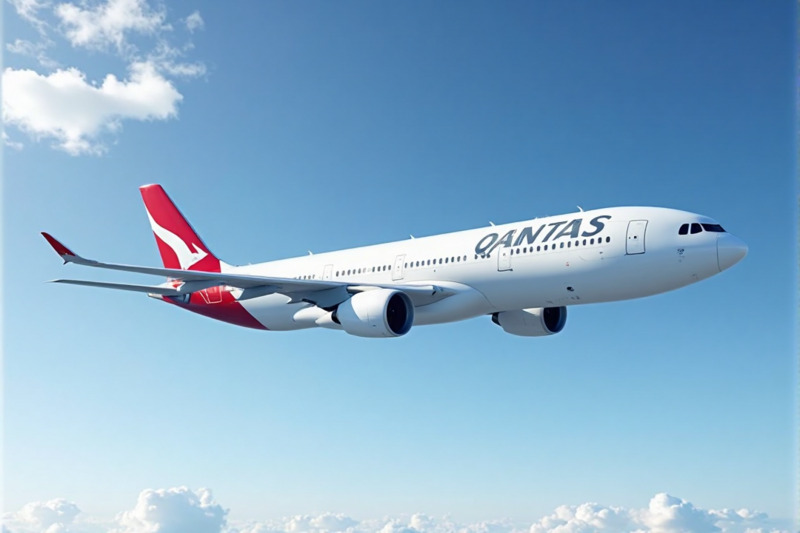Published on
September 16, 2025
New Zealand and Australia travel is set to experience significant growth as Qantas Group unveils a major trans-Tasman expansion, including the launch of its inaugural Airbus A220-300 international service between Brisbane and Wellington, along with a new low-cost direct route from Brisbane to Queenstown. This expansion aims to provide more options for travelers, supporting both tourism and economic growth between the two countries. The addition of hundreds of thousands of extra seats and the deployment of cutting-edge aircraft will enhance connectivity and offer a more convenient and comfortable travel experience for passengers.
Australia’s Qantas Group has unveiled a bold new trans-Tasman expansion plan, promising a wave of additional seats and new services aimed at boosting connectivity between Australia and New Zealand. This significant move includes the launch of Qantas’ inaugural Airbus A220-300 international service, connecting Brisbane with Wellington, and a brand-new low-cost direct route from Brisbane to Queenstown, set to begin next year. The expansion will offer more travel choices for customers and play a pivotal role in supporting the tourism and economic growth of both nations.
Starting in February 2026, Qantas, a proud oneworld member, will introduce its cutting-edge A220-300 aircraft on the Brisbane-Wellington route. This marks the first time that the A220 will be deployed on an international service. Initially, the aircraft will operate up to three times per week, gradually replacing the smaller E190 aircraft and some of the Boeing 737-800 services currently in use on the route.
The Airbus A220 is a notable upgrade in terms of both environmental performance and passenger comfort. It boasts greater fuel efficiency compared to older aircraft, aligning with the airline’s sustainability goals. Inside, the A220 offers a modern, airy cabin design, featuring large windows, spacious overhead lockers, and an improved overall experience. Free Wi-Fi will also be available to passengers, enhancing the in-flight experience.
For those traveling in premium cabins, the A220 features 10 business class recliners arranged in a 2-2 layout, ensuring a comfortable and spacious environment. In economy class, there are 127 seats configured in a 2-3 layout, offering more room and comfort than on older aircraft.
Alongside the Qantas service, low-cost carrier Jetstar, another member of the Qantas Group, will launch new nonstop flights between Brisbane and Queenstown, starting in June 2026. This will provide a direct link between Queensland and one of New Zealand’s top ski destinations, offering customers a quicker and more convenient route to the slopes. The service will operate three times per week during the snow season (June to October) on Jetstar’s A320 aircraft, making available more than 17,000 low-cost seats annually.
This marks a significant development in the region’s aviation landscape, offering Australians greater access to New Zealand’s world-renowned skiing resorts while providing New Zealanders with more options for travel to Australia’s east coast.
In addition to these new routes, Qantas and Jetstar will increase flight frequencies across existing services between Australia and New Zealand. Qantas, in particular, is set to add nearly 210,000 seats between the two nations across four major routes in 2026. These include an increase in frequency on Jetstar’s Brisbane-Auckland flights, which will rise from a maximum of 10 per week to twice daily. Jetstar will also expand its Melbourne-Christchurch services to daily year-round flights, while Sydney-Auckland flights will see an increase from eight weekly services to 12 per week.
Mainline Qantas will further ramp up capacity on the Sydney-Christchurch route, adding up to two extra flights per week during the peak months of February and March, translating to an additional 5,000 seats on this route alone.
New Zealand and Australia travel is set for a major boost as Qantas Group announces a trans-Tasman expansion with new direct routes and its first Airbus A220-300 international service. This move will offer more travel options and strengthen economic ties between the two nations.
Overall, these changes are set to provide travelers with more flexibility and options, helping to drive tourism and business connections between Australia and New Zealand. As both countries continue to recover and grow in the wake of global disruptions, these enhancements in air travel infrastructure are positioned to meet the increasing demand for seamless travel across the Tasman Sea. With these new developments, Qantas Group demonstrates its commitment to boosting connectivity, enhancing the passenger experience, and fostering greater economic ties between the two nations.
